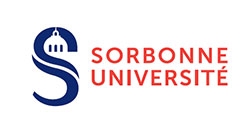
Paris Physics Master





PLASMA PHYSICS AND ITS APPLICATIONS
The course consists of 20 hours of classic lectures + 10 hours of exercises/practical work,
spread over 10 x 3h classes.
The exercises are both on paper while at the same time using existing plasma codes to
simulate specific aspects of plasma physics seen during the course. One may think of this
as doing "numerical experiments". The simulations are simple to run and to visualise, from a
jupyter notebook for example. The students will run the code(s) for different initial conditions
and interpret the results based on the knowledge gained during the lectures, and verify for
example their hand written calculations. The students will not post-process the simulations to
obtain the relevant quantities, these will be automatically displayed, i.e. there is no
programming involved.
Content:
1. Introduction to plasma physics
a. "Definition" of a plasma
b. Overview of plasma physics and its applications
i. Space and astrophysical plasmas
ii. Fusion
iii. Research on high-energy density plasmas
iv. Industrial plasma (cold plasmas)
v. Space plasma propulsion
2. Introduction to the basic concepts of plasma physics
a. Collisional and collisionless plasmas
b. Fundamental time, spatial scales, collective effects
i. Debye shielding, length
ii. Plasma frequency (Langmuir waves)
iii. Coulomb collisions in a plasma
iv. Plasma parameter
v. Magnetised plasmas
c. Typical values for natural and man-made plasmas
3. The motion of charged particles
a. Gyromotion
b. Guiding centre
c. Magnetised drifts
d. Adiabatic invariants
e. Examples (Magnetic mirror,....) and practical exercises using numerical
simulations
4. Plasma models: from kinetic to fluid models
a. The distribution function and its moments
b. Boltzmann equation, Vlasov-Maxwell equations
c. Derivation of the fluid models and the MHD approximation
5. Computational plasma physics: an overview of the different techniques
a. PIC
b. hybrid-PIC
c. computational MHD
d. Practical work using (one of) PIC/hybrid/MHD codes to simulate some of the
concepts seen in earlier chapters plasma (e.g. waves, instabilities, …)
6. Waves, shocks and instabilities in a plasma
a. Waves in a cold, warm and magnetised plasmas
b. MHD shocks and collisionless shocks
c. Streaming instabilities, MHD instabilities
d. Practical exercises using numerical simulations
7. Applications: Fusion
a. Basic concepts
b. Magnetic confinement fusion
c. Inertial confinement fusion
8. Applications: Space plasma propulsion, "hot" and "cold" laboratory plasmas
a. Basic concepts and types of SPP (rocket equation,...)
b. The plasma physics of Hall thrusters and MPD thrusters
c. Cold (discharge) plasmas
d. Hot, laser produced plasmas
The Plasma physics and its application course is given by Andrea Ciardi.